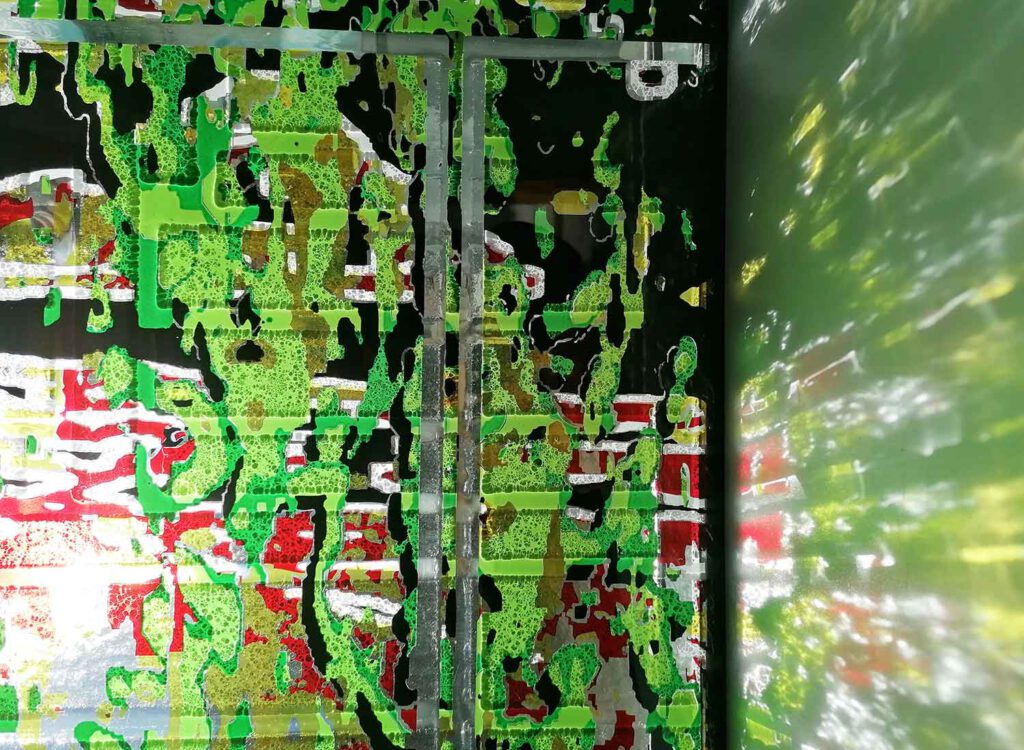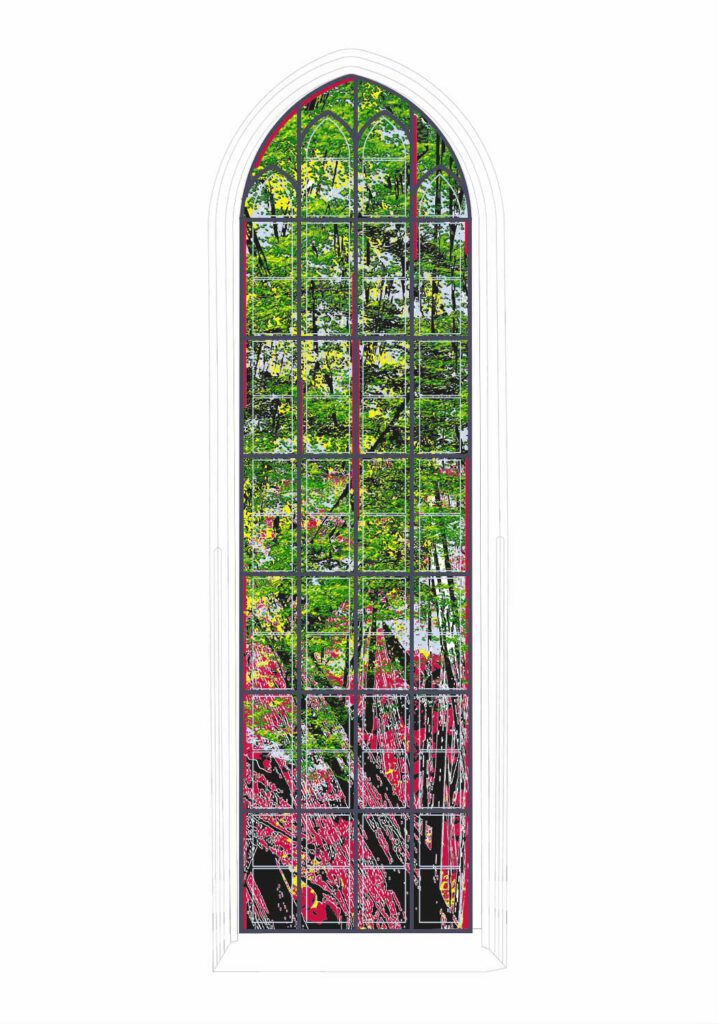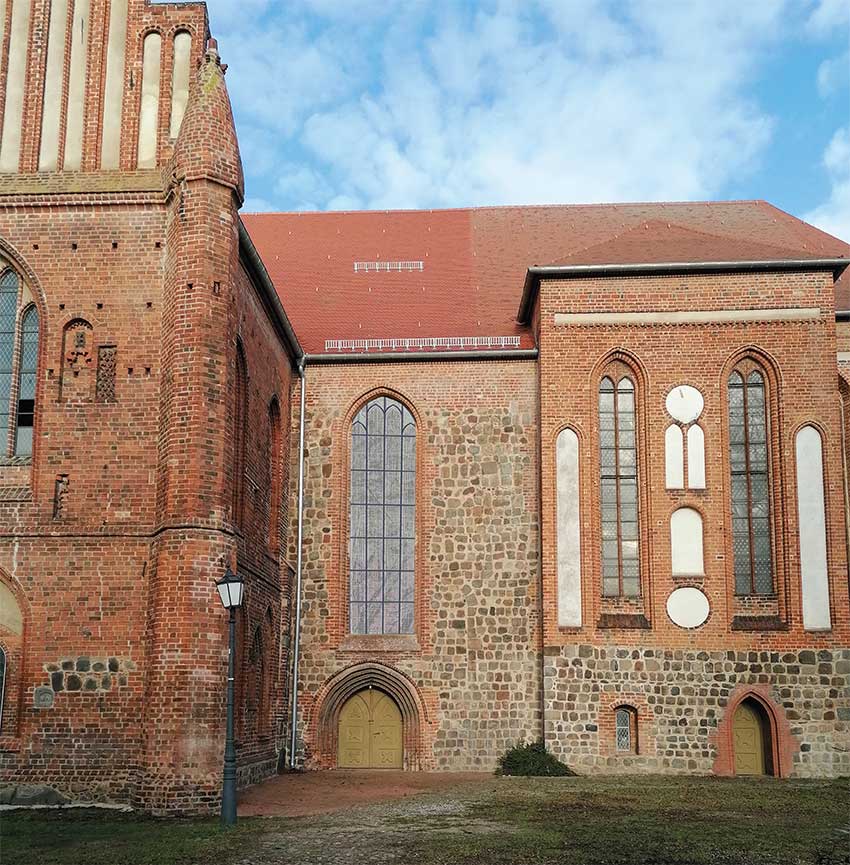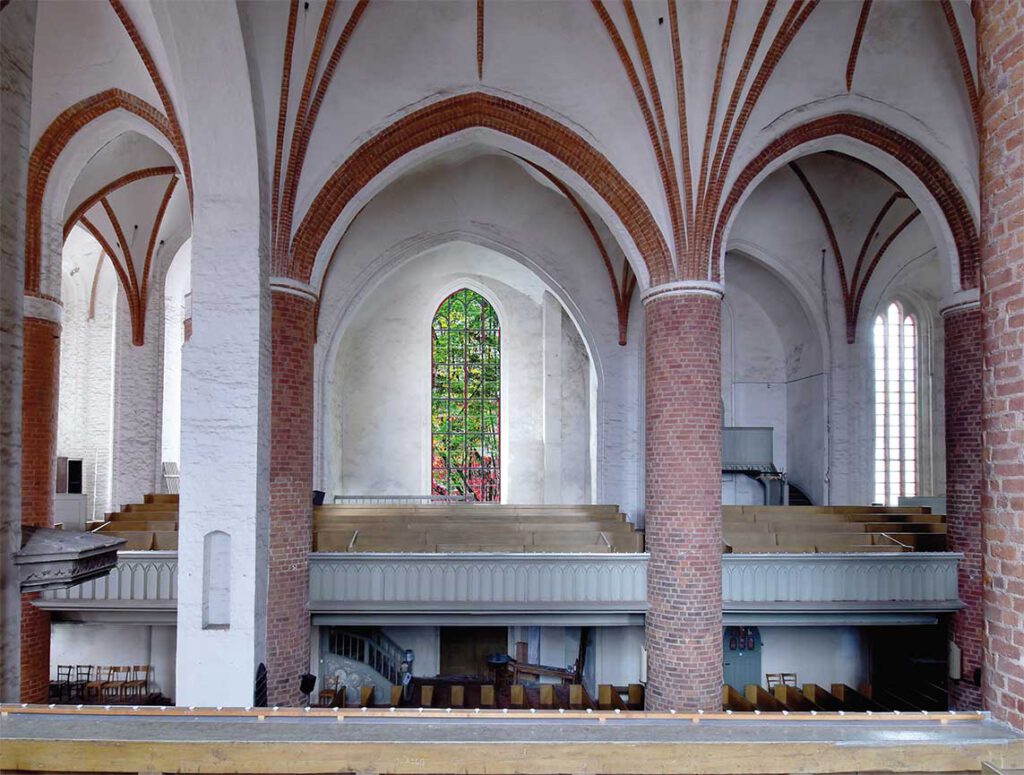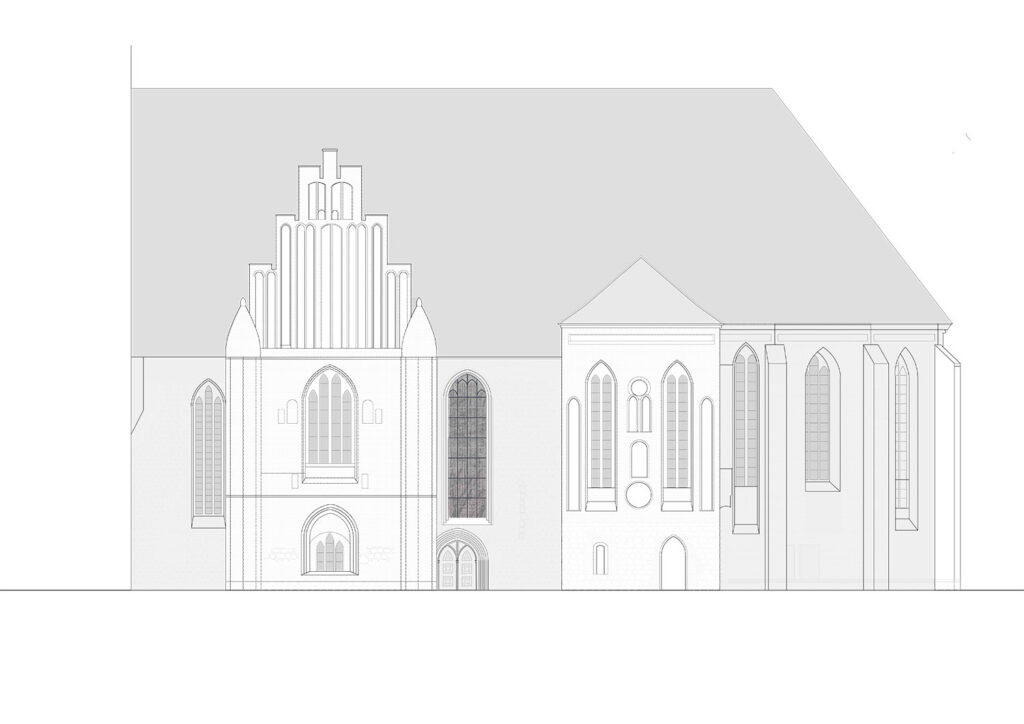1st place
colored glass window with thermal deformation
Redesign of the south window of the St. Nikolaichurch in Pritzwalk (Brandenburg/ Germany)
Non-public Single-phase Competition with Preceding Application Process
Client: church community St. Nikolai Pritzwalk
2023
South window: 810 x 225 cm (318,89 x 88,58 in)
Budget: 100 000 €
Partner: Peters Glass Studio Paderborn
The design for the south window describes in the motif the growing linden tree above a broken entablature. The tree is angled over the upper part of the window in green branches. The entablature and the destruction disappear behind and below the gallery, depending on the position. The possible handrails and guardrails of the staircase integrate themselves in the outside picture in the tangle of the drawn entablature. From the lower church area and thus also during the service or a devotion the hopeful branches of the lime tree dominate, interrupted by yellow sun spots.
Close to the viewing window, the form of tree and entablature dissolves into an abstract play of light. The colors and the shimmering light of the subsidence dominate the image. The sun dances with its colorful reflections through the room and over the visitor, creating an athmospheric environment. The design calls to look at things in some distance and distance and in the near playfully give space to emotions and transcendence.
The images used – a linden tree, the hope of a growing tree, a path leading to the church – are visible and recognizable as a message for all visitors. The lime tree, the tree detaches itself from the Christian context in personal viewing experiences and can thus become an identification for everyone, regardless of culture and origin.
The basic tone of the design picks up the colors of the city: red and green again and is thus intended to create an identity and a reference to the city and the region. The red tone is oriented in the color selection to the already used red of the surrounding windows. The red narrow framing of the surrounding windows is partially taken up again in the design. Yellow and black are used as additional accentuating colors. The color black breaks through the transparent surfaces and formally counteracts the exterior sacral austerity. The color choice of green and yellow is intended to transform liveliness and joy into the space, but at the same time appear warm and balanced. It is these colors that are mainly perceived by church visitors below the gallery. Only with the ascent to the gallery, the deep red and black in the lower area and the symbolic overcoming of this arises.
The window itself consists of two panes, one behind the other. On the inner pane is the paint application and the motif. The outer pane is designed by thermal subsidence.
These lowerings are designed in such a way that, on the one hand, they take up the four-limbed structure of the original pre-1945 design and, on the other hand, they describe a space or a path. The path is the possible continuation of the path on the church forecourt from the market square into the church. The lowering is accentuated in its play of light to varying degrees by the incidence of the sun, but tries to do justice to an old leaded glass in its delicate contours. The lines are intended to pick up on the soaring architecture of the church, but at the same time subordinate themselves to the masonry. Thus the lowering draws a path into the church, but does not demand it from the city visitors.
Viewed from the outside, without light inside, you can see the opaque blacks and the markings of the dark green shade. The light struts and stippling make the window look playful from the outside and arouse curiosity for the inside.
The south window is structured by three main vertical mullions. The original quatrefoil with the pointed arches appears as shading inside and out. This old division is deliberately taken back to pick up the history of the window, but not to give too much space to the past. The four-limbedness is traced inside by deliberate transparent omission in the image motif and taken up outside by the lowering.
